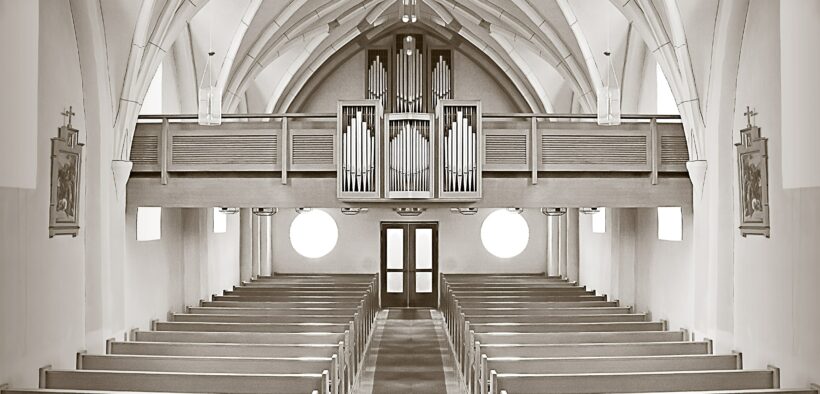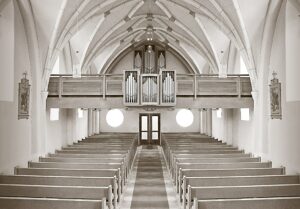There Go the Churches
The floodgates are opening, and congregations are leaving the United Methodist Church

OPINION–Just weeks ago, 487 United Methodist churches were approved for disaffiliation from the denomination, bringing the total of ratified exits to 1,314. Hundreds more have already voted to exit and are awaiting final approval. Almost all of them are theologically conservative churches anticipating the denomination’s official and enthusiastic liberalization on LGBTQ issues when its governing General Conference meets in 2024.

Pixabay / Creative Commons
By the end of this year (the deadline for exiting with church property) at least 3,000 and possibly 5,000 churches are expected to exit. United Methodism has 30,000 U.S. churches. Denominational agencies are preparing for a 38% drop in funding for 2025-2028, which implies an approximate expected membership loss of 2.3 million members from the nearly 6.3 million the denomination had in the United States in 2020. That is not a minor exodus.
Most exiting churches, perhaps 80-90%, are expected eventually to join the new Global Methodist Church. On the other hand, White’s Chapel United Methodist Church outside Dallas typically has nearly 6,000 worshippers weekly, making it one of the denomination’s largest. On Nov. 7, 93% of 2,505 voting church members resolved to exit United Methodism, surprising many observers, since the church is not known as particularly conservative.
White’s Chapel evidently does not want United Methodist progressivism nor Global Methodism’s conservatism. So the congregation is forming what it calls a “Methodist Collegiate College” “to create a new form of connectionalism — one of shared ministry, equal accountability, and practical governance.” The church wants to retain “Wesleyan Theology” and “Methodist traditions, rites & rituals” while escaping denominational ownership of property, payments to the denomination, appointment of clergy by bishops, and oversight of clergy ordination by the denomination. It hopes to put “people over polity.”
Access to MinistryWatch content is free. However, we hope you will support our work with your prayers and financial gifts. To make a donation, click here.
These aspirations reflect the current spirit of American Christianity, which is increasingly post-denominational and less interested in centralized church bureaucracy or denominational authority. The new Global Methodist Church, although a conservative denomination, reflects this same spirit. It stipulates that congregations will own their own property, have authority over their pastoral appointments by bishops, and make minimal payments to the denomination, whose bureaucracy, such as it exists, will be lean.
Another church that is leaving the UMC and becoming independent is St. Andrew United Methodist Church of Plano, Texas. With 6,500 members, it’s the 7th largest United Methodist church in Texas. Pastor Arthur Jones explained: “Everyone involved has a deep love for the denomination that birthed us, but the fractures and flaws of the institution are too deep to ignore.”
He also noted that United Methodism is “just one of 80 Methodist denominations” in the world and has only existed since 1968 while “Methodism dates to the 1700s with a variety of realignments within Methodist denominations over that time.” He pledged that the “historical Methodist theology and our focus on Jesus is what we aim to protect.”
Jones is from a famous Methodist family that includes his father, Bishop Scott Jones of Houston, and his uncle, former Duke Divinity School dean Greg Jones. The church’s previous longtime founding pastor of 36 years, before dying of cancer months ago, recorded a dramatic video endorsing exit from United Methodism.
The church changed its name to St. Andrew Methodist Church, signifying it’s staying Wesleyan in belief but cutting ties to the liberalizing and, for many, increasingly irrelevant United Methodist denomination. It declined to use the official United Methodist process and simply declared its independence, citing recent Texas court rulings favoring departing United Methodist and Episcopal churches. And like White’s Chapel, it does not plan to join the Global Methodist Church. The church explained:
St. Andrew will disaffiliate from the United Methodist Church and will not affiliate with any other existing Methodist denomination. St. Andrew will remain Methodist with the same Wesleyan theology. We will be named St. Andrew Methodist and operate over a period as an independent Methodist Church while seeking partnerships and accountability with other like-hearted churches. Just as we have been since our founding in 1986, we will stay focused on our mission as a Methodist Church to create passionate disciples of Jesus Christ and remain Biblically-based, Christ-centered, and Grace-filled.
Exiting United Methodist churches are quitting their denomination for both pragmatic and theological reasons. Loyalties to denominations that once persisted across generations are suddenly ending. Successful congregations, even if denominational, often function independently. American nondenominational Christianity continues to grow while most denominations decline.
Unsurprisingly, the liberal denominations of the old Mainline Protestant world are the fastest to decline. The Episcopal Church just announced that in 2021 it lost 56,314 members while attendance dropped 36% from 2020. Sixty-two congregations were permanently closed. Average worship dropped from 55 to 21 persons. Ninety percent of Episcopal churches have fewer than 100 attendees on Sunday.
Many Methodist congregations seek to escape this grim fate. And who can blame them?
This article was originally published by WORLD Opinions. It is reprinted with permission.



